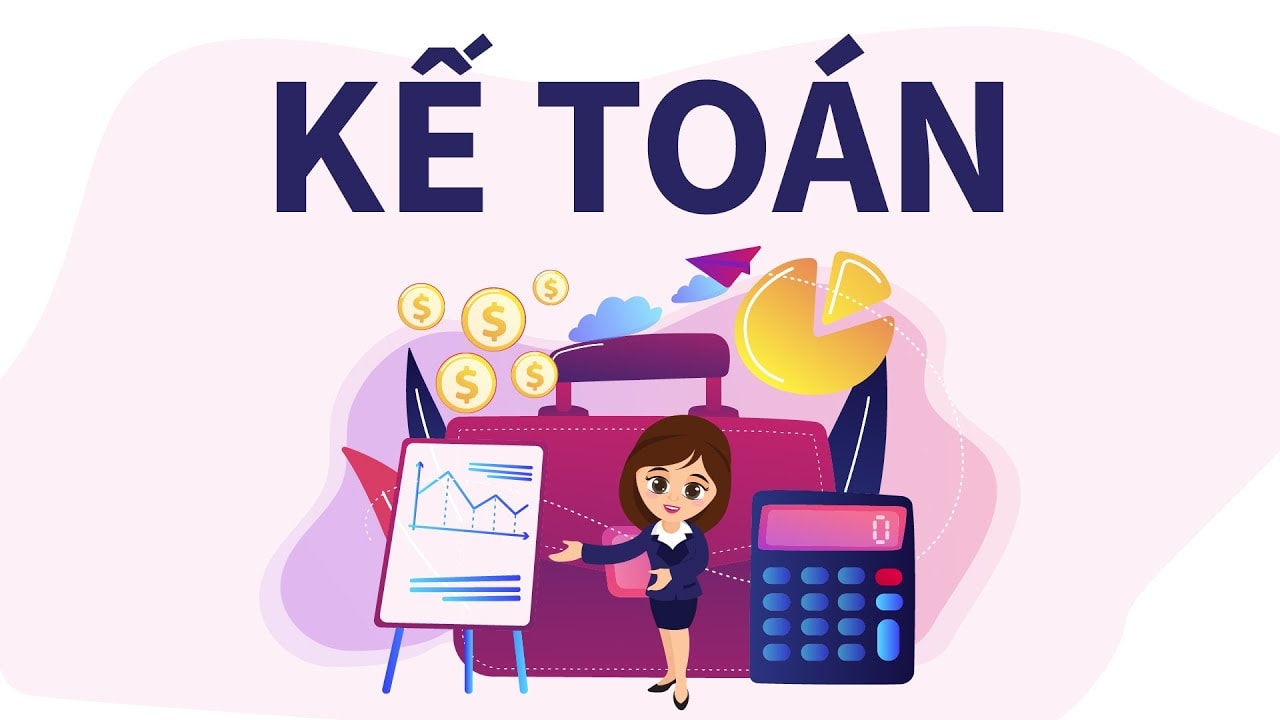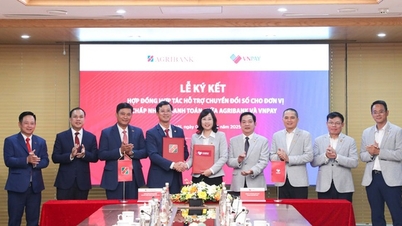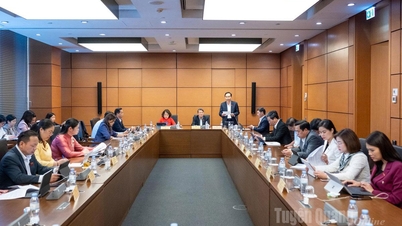Summary helps plan work for accountants
| Content | Action to take |
| Forms - Books | Design/edit templates, add accounting regulations |
| Accounting accounts | Edit name/number if necessary, ensuring reporting is not affected. |
| Financial reports | Add target - must explain |
| VAT | Lower tax rates, apply cashless payments, supplement export documents |
| Tax code | Prepare to transfer all individuals/business households to use identification numbers |
| Invoices & Identification | Upgrade electronic invoice system, register VNeID |
| Social insurance | Identify new subjects required to pay social insurance |
| E-commerce platform tax | Check and coordinate the floor to transfer tax obligations |

1. Self-design/modify document forms - accounting books
Enterprises are NO longer required to use the forms in Appendix 3 and 4 of Circular 133/2016.
You can design or modify the template to suit your business, as long as it is honest, transparent and verifiable.
If amended, it is necessary to issue accounting regulations stating clearly the reasons and legal responsibilities.
2. Modify the accounting system
The system in Appendix 1 of Circular 133/2016 is still applied, but the name, number, structure, and content of the account are allowed to be changed.
Absolutely ensure: clear classification of business, no duplicate objects, and no impact on financial reporting indicators.
3. Add indicators in financial reports
The name and accounting code can be changed if it is suitable for the business and does not distort the financial statements.
Additional indicators may be added to financial statements, but must be clearly explained.
4. Establish accounting regulations
If any adjustments are made to forms, accounts, reports, etc., the enterprise is required to issue internal regulations clearly explaining such changes.
5. New VAT policy
Remove the threshold of 20 million VND: All input VAT invoices to be deducted must be paid non-cash.
Some items changed from non-taxable to taxable, or from 5% to 10% (such as sugar, educational equipment...).
Expanding the scope of application of 0% tax rate (international transportation, duty-free zones...).
Additional tax refund conditions: Enterprises only supply goods subject to 5% tax and are eligible for a refund if the remaining deductible amount is 300 million or more.
Tighten up the behavior of abusing invoices and fake tax refunds.
6. Convert tax code to personal identification number
Individuals, business households, and individual businesses are required to use personal identification numbers (12 digits) instead of tax codes from July 1, 2025.
Similarly, households, business households, and business individuals will use the personal identification number of the household representative or the business individual himself as the tax code of that household or business establishment.
The tax authority will not issue new tax codes in the old form (10 or 13 digits) to these subjects after July 1, 2025.
Conversion roadmap: From February 6, 2025, the tax system has begun to accept the issuance of tax codes in the form of personal identification numbers for new tax registrants. Tax codes previously issued by the tax authority (not identical to the identification number) will be used until June 30, 2025. From July 1, 2025, all tax transactions must use personal identification numbers instead of the old tax codes.
The tax authority will automatically compare data with the national population database to convert the individual's current tax code (if the information matches) to an identification number, without creating administrative procedures for the taxpayer.
In case the information does not match, the old tax code will be temporarily "pending update" and individuals and business households need to complete the procedure to adjust tax registration information to synchronize the data. After updating, the personal identification number will officially replace the tax code in all transactions.
Previously issued documents under the old tax code are still valid and do not need to be adjusted, but from the time of conversion, businesses should update the new tax code information of partners and employees in the accounting system. This is a step forward in modernizing tax management, linking tax data with population data, making it more transparent and convenient for both tax authorities and taxpayers.
7. Electronic invoice - electronic identification
Continue to deploy electronic invoices via cash registers (Circular 70/2025 from June 1, 2025);
Electronic invoices generated from cash registers (POS): The Government issued Decree 70/2025/ND-CP (March 20, 2025) amending Decree 123/2020 on invoices and documents, accordingly, from June 1, 2025, electronic invoices generated from cash registers must be implemented for a number of subjects.
Specifically: (1) Business households and individuals paying taxes by lump-sum method (not or not fully implementing accounting and invoice regimes) with revenue of 1 billion VND/year or more and using cash registers must register to use electronic invoices generated from cash registers that are directly connected to the tax authority.
Enterprises operating in the retail sale of goods and services directly to consumers in fields such as shopping malls, supermarkets, retail (except for cars, motorbikes, other motor vehicles), food and beverage, restaurants, hotels, passenger transport, entertainment services, movie screenings, etc. must also deploy the use of electronic invoices from cash registers that connect data to tax authorities.
8. Reforming Social Insurance policy
Reducing the minimum social insurance payment period to receive pension: Conditions for receiving pension are relaxed, reducing the minimum number of years of social insurance payment from 20 years to 15 years for both men and women.
Restricting one-time withdrawal of social insurance for new participants: In order to ensure long-term security, the new law tightens the conditions for one-time withdrawal of social insurance for those who start participating in social insurance from July 1, 2025 onwards. Specifically, employees will not be able to receive one-time social insurance if they do not meet the conditions, except in special cases prescribed by law.
Encourage retention and pension payment instead of lump sum withdrawal: To motivate employees to retain social insurance, the Social Insurance Law 2024 adds benefits if they do not withdraw money in lump sum. Specifically, employees who continue to pay or reserve their payment period will enjoy higher benefits when eligible, and receive pension more easily (due to the reduced payment year requirement).
Reducing the age of receiving social pension benefits: The social pension regime (benefits for the elderly without pensions) is expanded. From July 1, 2025, the age of receiving monthly social benefits will be reduced from 80 to 75 years old.
9. Business households declare and pay taxes
E-commerce platforms with integrated payment functions (Shopee, Lazada...) will deduct and declare taxes on behalf of businesses.
Cases not going through the floor (Facebook, Zalo...) must self-declare and pay taxes according to Decree 117/2025/ND-CP
Tax deduction rate on revenue: VAT and personal income tax deducted by e-commerce platforms are calculated as a percentage of revenue of each transaction, classified by type of goods/services.
| Transaction type | VAT (%) | Resident personal income tax (%) | Non-resident personal income tax (%) |
| Selling goods | 1.0% | 0.5% | 1.0% |
| Providing services | 5.0% | 2.0% | 5.0% |
| Transport services, services with goods | 3.0% | 1.5% | 2.0% |
If the e-commerce platform cannot classify the transaction as a product or service, the corresponding highest rate will be applied (eg: 5% VAT, 2% or 5% PIT depending on the case).
Source: https://baonghean.vn/ke-toan-can-thay-doi-nhung-gi-sau-ngay-1-7-2025-10301368.html








































![[Photo] Parade to celebrate the 50th anniversary of Laos' National Day](/_next/image?url=https%3A%2F%2Fvphoto.vietnam.vn%2Fthumb%2F1200x675%2Fvietnam%2Fresource%2FIMAGE%2F2025%2F12%2F02%2F1764691918289_ndo_br_0-jpg.webp&w=3840&q=75)
![[Photo] Worshiping the Tuyet Son statue - a nearly 400-year-old treasure at Keo Pagoda](/_next/image?url=https%3A%2F%2Fvphoto.vietnam.vn%2Fthumb%2F1200x675%2Fvietnam%2Fresource%2FIMAGE%2F2025%2F12%2F02%2F1764679323086_ndo_br_tempimageomw0hi-4884-jpg.webp&w=3840&q=75)






































































Comment (0)